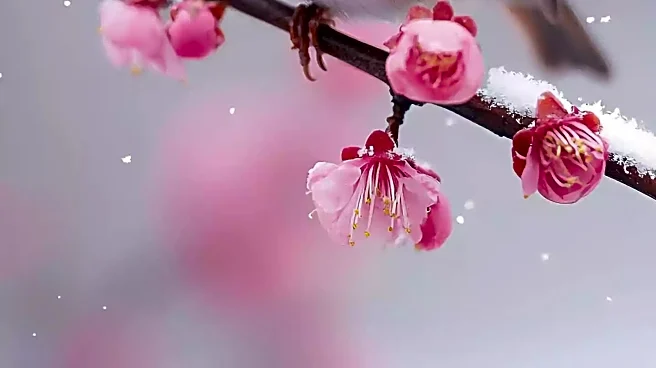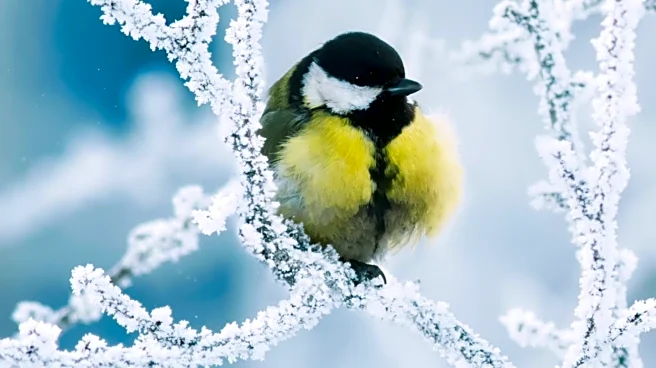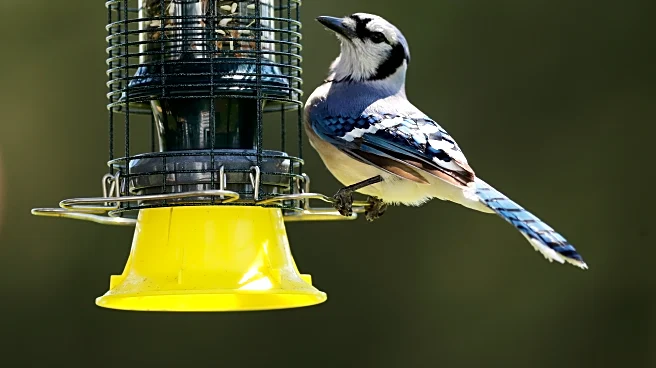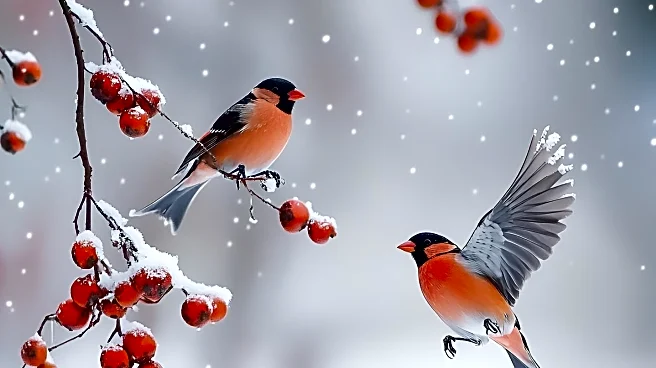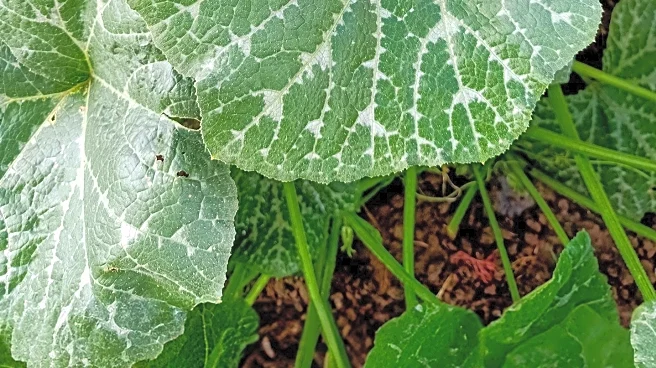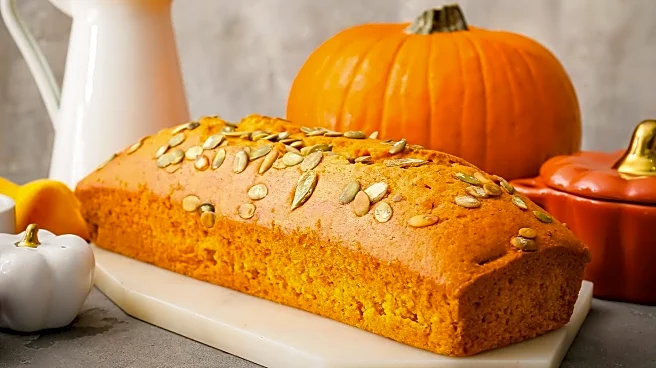What is the story about?
What's Happening?
As the gardening season winds down, there is a growing emphasis on supporting non-migratory birds that remain in suburban New York gardens throughout the winter. Gardeners are advised to maintain birdfeeders stocked with high-energy seed mixes, including unsalted peanuts, black-oil sunflower seeds, and suet, to provide essential fat and protein. Additionally, leaving perennials standing can offer seeds and habitat for birds, while shrubs and trees like American holly and viburnum provide berries. The practice of leaving fallen leaves in garden beds is recommended to insulate plants and support hibernating insects, which in turn feed ground-feeding birds. Gardeners are also encouraged to turn off outdoor lights to prevent disorienting migratory birds.
Why It's Important?
This initiative is crucial for maintaining the ecological balance and supporting bird populations during the harsh winter months when natural food sources are scarce. By providing food and habitat, gardeners can help sustain bird populations, which play a vital role in pest control and pollination. The practice also promotes biodiversity and enhances the aesthetic appeal of gardens during winter. Moreover, reducing light pollution aids migratory birds in navigating their long journeys, highlighting the interconnectedness of human activities and wildlife conservation.
What's Next?
Gardeners are encouraged to plant seed- or berry-producing shrubs and trees during the early fall, taking advantage of discounts at garden centers. This will not only support birds in the winter but also provide nesting sites and food sources in the spring. As awareness grows, more individuals may adopt these practices, potentially leading to broader community efforts to support local wildlife. The long-term impact could include healthier bird populations and more resilient garden ecosystems.
Beyond the Headlines
The movement to support winter birds reflects a broader cultural shift towards sustainable gardening practices and wildlife conservation. It underscores the importance of individual actions in contributing to environmental stewardship. By fostering a deeper connection with nature, these practices can inspire further engagement in conservation efforts and promote a more harmonious coexistence with wildlife.
AI Generated Content
Do you find this article useful?
